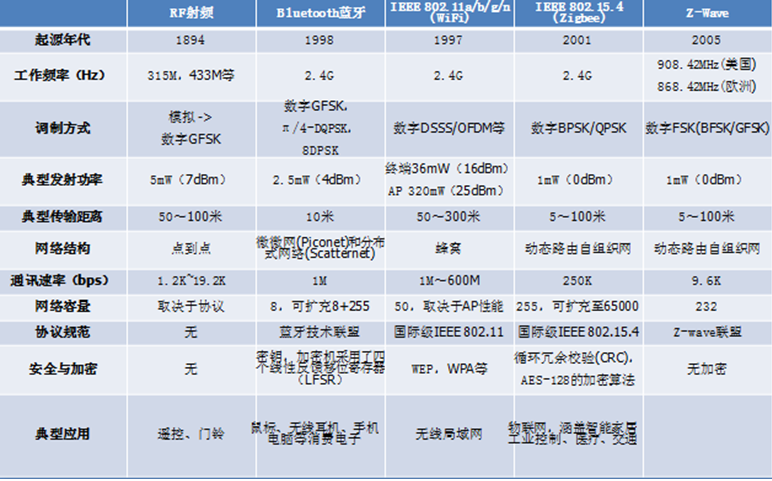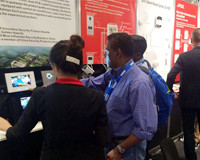First of all, the big brothers in our country basically have invested in smart homes. For example: BAT, there is also a well-known name is Hisense; internationally there are Google, Apple, Samsung and other familiar companies;
Second, there are some companies that are already engaged in the manufacture of security equipment, and upgrade their products while the mobile Internet is popular. For example, Chuanggao and Cree.
Of course, in addition to these, more are new companies that are newly invested in the smart home industry, such as smart cats (home cats) and Zhuo Yayun.
Advantages, disadvantages and applications of different technologies:
RF, this technology has been used very early, and the general security products use this technology. The benefits of this technology are simple and cheap. Then he can be compatible with many wireless devices in the existing market, Shenzhen Smart Cat Software Technology Co., Ltd. is to see this market.
Bluetooth is familiar to everyone. This technology is used to transfer data between mobile phones and mobile phones. Smart bracelets also use this method. His shortcoming is that the distance is short, and the general smart home products are not used.
Wifi, everyone is more familiar with it, it is equivalent to a hot spot, and now many control hosts are compatible with the wifi function, in addition, the camera basically uses wifi technology.
Zigbee, a technology popular in the world, has many domestic merchants, all imported from foreign countries, such as Nanjing IOT. In addition, Nanjing IOT has developed a smartroom technology on zigbee, in zigbee. Technically compatible with wifi and Bluetooth.
Z-wave, a wireless networking standard led by the Danish company Zensys, has a certain user base in the world, but it seems that this is less used in China. I have not heard of this technology.
Let's take a look at the business model:
1. Merchants mode: recruiting dealers, this is a more traditional method, such as: Solar, Zhuo Yayun, Kobydi, Violet IOT.
2.B to C, the most popular Internet is currently applied, and the cost is relatively low, suitable for start-up companies. For example: wind vane, Lifesmart, Turing cat.
3. Modes of cooperation with manufacturers, for example, Haier, Haier provides wireless modules for those home appliance companies, and then provide a complete set of services for those enterprises; as well as smart cats (home cats), smart cats are compatible with most wireless devices on the market, Provide control host and mobile app for wireless device manufacturers, and also provide wireless modules for customers like Haier. In addition, there is a foreign smartthing (acquired by Samsung), which is compatible with several technologies and has the same philosophy as a home cat.
4. Explosion mode is to make a product to the extreme, such as the US Nest. In addition, Xiaomi is a bit similar.
Business model analysis
In fact, in the above several modes, 1, 2, and 4 modes are their own, because there are many kinds of existing technologies, and each household is different, which causes the products between the brands not to be mutually common. Users can only purchase all the products they need in one of the smart homes.
Among them, the third mode is my personal favorite, like I do not like to be trapped people, like to buy things according to their own preferences, I can buy A home host, using B's wireless device, the phone is loaded C home software. Haha, it seems that I can only think about it at this stage. In the third mode, Haier does not have to say that in the Chinese household appliance industry, it has been deeply cultivated for many years, and its intelligence is also relatively early. It requires technology and technology, and the market has a market. Smartthing is compatible with several protocols. He is equivalent to a platform. The smart cat, like the previous two, is also serving other businesses, but the service is different. Haier is a service appliance manufacturer and provides them with wireless modules. Smartthing is compatible with those zigbee, Z-wave, and wifi technologies. But smart cats are compatible with different frequency bands used by wireless devices on the market to be compatible with different wireless devices. He is targeting small and medium-sized wireless devices or security equipment manufacturers, or for hardware equipment manufacturers that do not have research and development capabilities. Moreover, he has the advantage that it is cheaper. Compared with the general zigbee and z-wave modules, the price of the smart cat adopting RF modules is only a fraction of them. This is a powerful drug for today's high-priced smart home devices. Give users the opportunity to consume smart home products.
In addition, many security equipment manufacturers in the past were relatively small in scale, lacked any technology and research and development capabilities, and adopted RF technology. It is impossible to integrate into other businesses. Smart cats gave them opportunities.
Today's smart homes are like the Internet at the end of the 19th century. They are full of bubbles. When the bubble is gone, the companies that can be left are definitely the companies that need them, that is, B to B companies. Two of the three companies are already quite large and marketable. Smart Cat is a relatively small start-up company, but this company will be a dark horse in the smart home industry.







